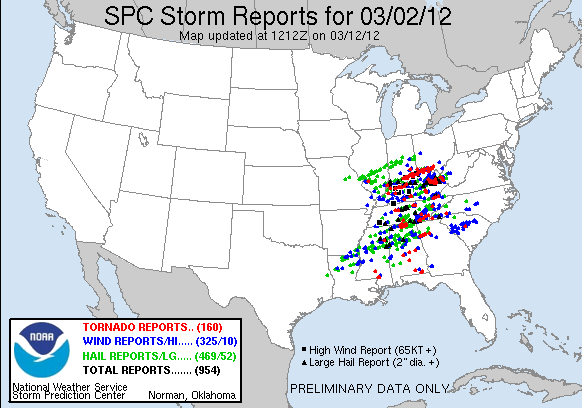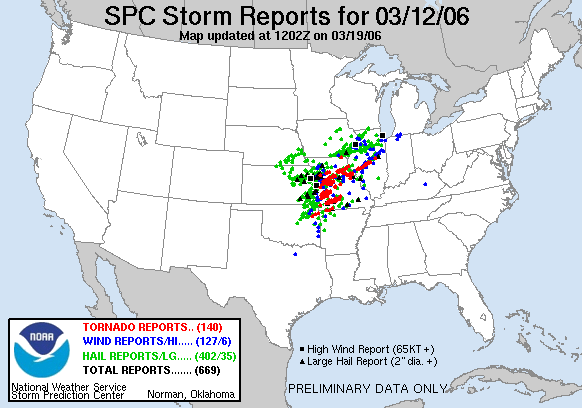
So far the National Weather Service has confirmed 45 tornadoes from Friday’s outbreak; the SPC has 121 filtered tornado reports listed on their website as of March 6
th. There is still a question as to the exact number of strong to violent tornadoes but the total will likely end up in the mid 20s. The strongest of these tornadoes is the Henryville, EF4.
While damage surveys are still on-going on reported tornado paths in parts of the Midwest and Deep South, the question has been thrown out: Was this the largest March tornado outbreak in U.S. history?
The answer, yes and no.
In recent memory March 9, 2006 was a significant severe weather day across the central plains. 54 total tornadoes touched down, 22 F2 rating or stronger. It is likely that the March 2
nd, 2012 outbreak will top these numbers.

A likely bigger and more wide reaching event occurred on Palm Sunday 1920. The March 28
th event spawned 38 significant (F2+) Tornadoes. Since weaker tornadoes were not as well documented in the early 20
th century a total tornado count cannot be known. Simply based on the significant tornado count, it is not likely this most recent outbreak will top 1920.
The big question becomes….is there really more severe weather occurring or is out knowledge and awareness increasing to the point of catching every storm?
Over the past few decades storm reports have increased due to an increasing population density and undoubtedly storm chasers. Tornadoes are reported and recorded that simple would not have been seen 10 years ago without these eyes on the storm.
No matter what the exact numbers end up being, this was a devastating tornado outbreak and we wish a speedy recovery for those communities affected.











